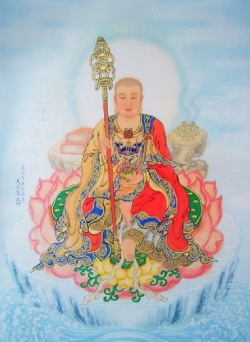INDIC – THAI COSMIC AND ART HISTORICAL TRADITIONS
The Indira Gandhi National Centre for the Arts, New Delhi will hold a “National Conference on Indic-Thai Cosmic and Art Historical Traditions” at its premises from 30th to 31st March, 2019. India and Thailand have civilizational linkages.
Both the countries share commonality in culture since remote past. First Thai kingdom, known as Mon-Dvaravati, flourished in the lower Menam valley during 7th – 11th centuries A.D.
The majority of the Thais were practicing Theravada Buddhist tradition.
Moreover, Hinduism played a significant role in their cosmic and art historic traditions. Professor B. J. Terwiel views,“the Thai cosmic beliefs as a symbol of Buddhist philosophy”.
The elements of Hindu art tradition held in a high position. Marshall opines that the “Thai cosmology is based on spiritual and religious beliefs and practices.
The royal ceremonies are conducted by Brahmin priests from the royal house which is a visible influence of Brahmanism over the royal family”. The Thais cosmic beliefs developed in different historic periods.
In Thai cosmic system, symbolism plays a significant role. Thenotion of Trai Bhumi (three worlds) refers universe as a round shaped keeping Phra Sumeru Mountain at the core of the universe.
The Mountain, situated at the heart of the universe, is 80,000 Yot deep under the ocean and 8,000 Yot above the water surface.
It is surrounded by seven Sattaboribhan Mountains and Si Than Dorn oceans with four different continents.
One is Jambudvipa, where half was inhabited by human and the other half was occupied by mythical creatures.
The Narai God (lord Narain) resides there and later reborn as king in order to create a peaceful world. After the death, the King as god of gods (Devaraj) returns to his palace on Phra Sumeru Mountain.
The building of the royal crematorium, a bid of eternal farewell to the King, consists of the main Meru which resembles the mythical Sumeru Mountain in heaven.
It is presented as imagination to create different levels of heavenly beauty 2 by surrounding the structure with statues of angels, garudas, nagas and mythical creatures as per Trai Bhumi concept. This concept refers to cosmological theories, the belief of life after death as well as existence of heaven and hell.
The Thais worship various Hindu gods and goddesses.
The gods Brahma, Vishnu and Shiva (trinity) are well worshipped. God Brahma is widely worshipped as He is the lord of creation.
As creator of the world, Thai people primarily worship him.
Next to him, god Vishnu who is considered as the protector of the universe. The mystical bird Garuda, mount of god Vishnu, called as Raja Krut, is prominently depicted in Thai Art and paintings.
The last member of the trinity, god Shiva is considered as a god of destruction.
During early Thai history, Shiva was the primordial god and widely worshipped.
Shaivism is taken from the concept of Rudra of Rig Veda. God Shiva, in Thai cosmic belief, is considered as a creator, preserver, and destroyer too. He is also closely related to saktism (the female power). The Kings identified themselves as an incarnations of god Shiva.
They set up lingas as a religious act and celebration of a newly conquered territory.
The Thai cosmology is revealed in temple architecture too. Thais have a long history of decorating their monasteries by the statues of the troops of mythical creature. As an example, a troop of mythical creature statues are placed around Phra Prang or Chedi of Wat Arun Ratchawararam including its outer Prang.
This distinguished layout represents symbolic presentation of mythical soldiers protecting Phra Sumeru Mountain keeping by Sattaboribhan Mountain upon Indra God’s order.
The Thai cosmology also refers to the inhabitants of the universe, the measurement of space as well as life span of different gods and the whole universe.The images of Buddha with uncovered right shoulder, clearly visible garments, and reflection of serenity indicate enlightened Buddha.
During Mon-Dvaravati periods, a large number of clay or terracotta plaques depicting Buddha life and related episodes were produced as an act of acquiring merits as well as warding of the contact of evil spirits. The manufacture of such images took place in Southeast Asia and other parts of the Buddhist world.
A unique art style developed bearing impact of Gupta, post Gupta and Pala art of India during pre-Sukhothai (7th
– 13th centuryA.D.), Sukhothai (late 13th
- 15th century A.D.) and
Ayudhya (mid 14th
- mid 18th century) periods. Buddhism was the primary theme of these art styles. A large number of Thai sculptures and paintings were produced under the royal 3
patronage. Erection of temples and other religious shrines at auspicious time were considered as an act of acquiring merits. This was continued during Chakri dynasty (Bangkok period).
The first three kings of the Chakri dynasty renovated or restored temples and Thai cultural objects which were damaged or destroyed by the Burmese when they sacked Ayudhya kingdom.
